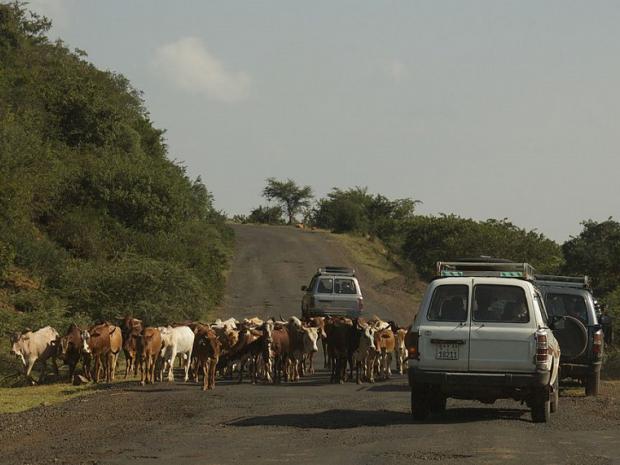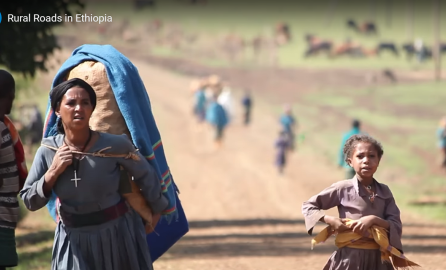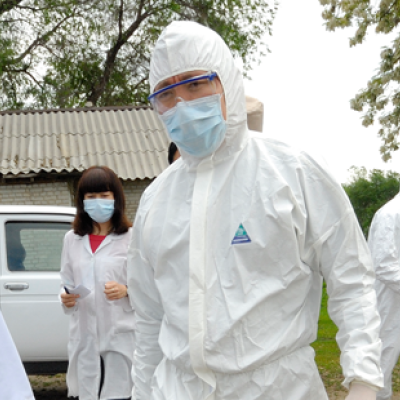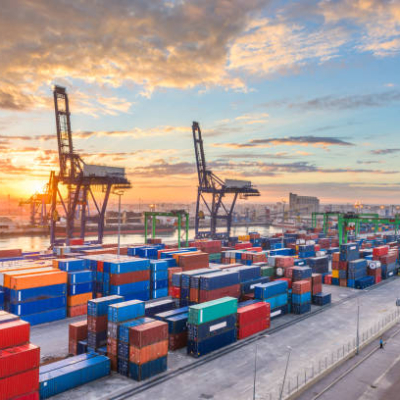It may seem curious to begin the fourth thematic month of the European Year for Development on Health by talking about roads, but as experience in Ethiopia has shown, improving transport infrastructure can make a big difference to people’s well-being.
Take Abriha Berhe. Living in Tabia Adi Deqs'andid, Kushet Guangua, in Ethiopia, she was in labour for two nights during the birth of her first daughter before villagers finally carried her to the hospital. By the time her third child was born however, the improved road network allowed an ambulance to take her directly to a clinic for the birth, and return her safely home afterwards.
| Watch the full version of this video in the Public Group on Transport. |
Antonio Capone, Head of the Infrastructure Section at the Delegation of the European Union to Ethiopia, recalls the importance of roads from his previous posting in Guinea Bissau, where he was in charge of a health project focused on maternal mortality.
“The maternal mortality rate in Guinea Bissau is one of the highest in the world,” he said. “Seventy to eighty percent of the fatalities were due to three causes: bleeding/haemorrhage, obstructed labour/dystocia, pre-eclampsia and eclampsia. Remedies for these main causes are not particularly complex and were generally available in health centres (even in a very poor country like Guinea Bissau) but women were not able to get there in time because of the catastrophic condition of the rural roads network.
The situation is not very different in other least developed countries, but I am quite sure public opinion does not even remotely suspect that in some countries one of the main causes of maternal mortality may be the lack of roads in rural areas.”
The impact of the road network on public health was also highlighted during the last Ebola crisis. Even if roads may contribute to the spread of the illness they also, above all, connect patients and doctors. For example in Liberia, due to the lack of road network it was almost impossible for sick patients outside Monrovia to reach a medical centre in time to be treated.

Ethiopia, 2007, road towards Addis. Pic: A. Davey
It is estimated that more than 900 million people worldwide do not have access to an all-season road. Until recently, this problem was particularly acute in Ethiopia, the most rural country in Africa, where 85 % of the population of 94 million live in rugged, mountainous areas. The country itself is the same size as the UK, Germany and France combined.
But EU assistance to help fund roads through individual projects and budget support has borne fruit.
In 2007 the average travel time to reach an all-season road in rural areas was four and half hours. Now it is less than two hours. The road network is almost three times bigger than 1997, with the percentage of the population residing within 2 kilometres of an all-season road increasing each year by 2 percent.
"We have an ongoing programme of €50 million Euro and we will continue to support this road sector during the four following years with a new allocation of €140 million," said the EU Ambassador to Ethiopia, Chantal Hebberecht.
|
More information about the EU's investment in roads in Ethiopia is available in the National Indicative Programme for Ethiopia 2014 to 2020, available here. The EU intervention in the road sector in the 11th European Development Fund will be shaped in the form of a phasing out sector budget support programme that aims at consolidating results achieved, improving road safety and ensuring long-term sustainability, to which adequacy of management and financing of maintenance as well as improved traffic management as well as a consolidation of the increased role of Ethiopia's domestic private sector are key. The latter are areas where EU assistance can continue to make quality contributions. A road sector public expenditure review can also contribute to long-term. |
Two years ago a Transport and Poverty Observatory Study of four federal roads in Ethiopia financed by the World Bank found the number of women in affected areas delivering babies at hospital had increased from 9.4 to 18.6 percent.
Such changes benefit other sectors as well. In the past, children in Abriha Berhe’s village would not attend school as they were cut off by a treacherous river. Now a road has made enrolment possible for children as young as seven. It has also meant cars can be used to carry crops, instead of the more time consuming donkeys or people themselves.
Ambassador Hebberecht told capacity4dev that better roads also promote social cohesion.
"You can connect the people together. You can increase the exchanges, you can increase their knowledge. Now 65 % of the villages have access to the main national roads. It is extremely important. Especially in Ethiopia because they are more than 85 different ethnic groups and it is very important to create these interconnections between the people."
| To learn more visit the Public Groups on Transport and Global Health in EC development cooperation on capacity4dev.eu |
This collaborative piece was drafted with input from Antonio Capone, Lionel Wallef and Kevin McCarthy with support from the capacity4dev.eu Coordination Team. Teaser image courtesy of David Stanley.





(2)
Log in with your EU Login account to post or comment on the platform.
i totally agree with you James Madhier, Even if roads may contribute to the spread of the illness they also, above all, connect patients and doctors.
As someone who has been on the ground, I agree with this article completely. Health and roads are highly interrelated. Most roads are seasonal and this means many areas are cut off from the rest of the world during rainy season and other bad weather. It is refreshing to hear that an initiative as the one in Ethiopia took place.